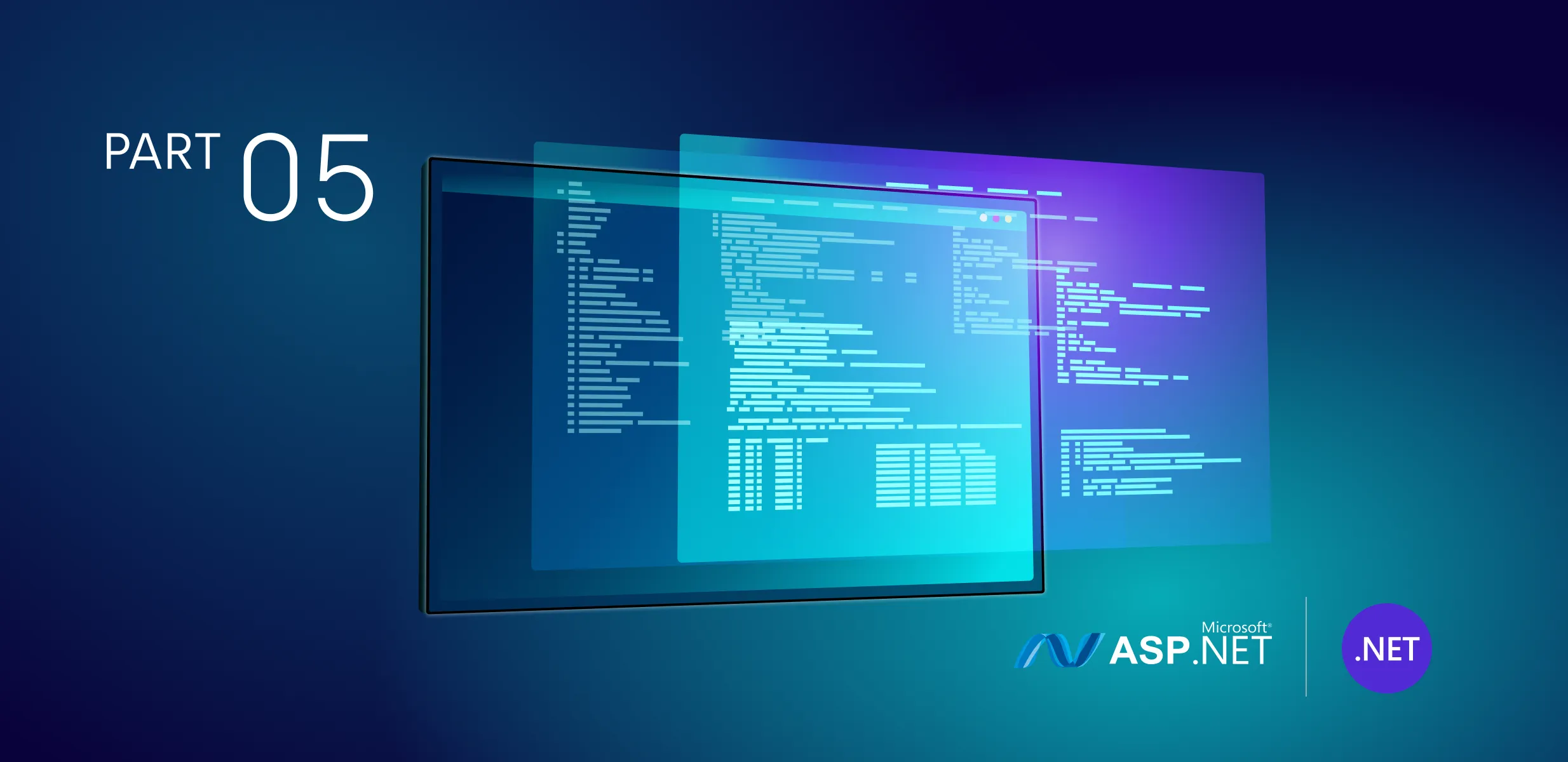
ASP.NET Web Forms modernization series, Part 5: Server application considerations

This is part five of our series of blog posts dedicated to ASP.NET Web Forms Modernization. The series expands on the topics discussed in our Migration Guide: ASP.NET Web Forms to Modern ASP.NET whitepaper – a compilation of technical considerations for modernizing legacy .NET web applications, gathered from our experience at Resolute Software doing many .NET modernization projects.
Here is a list of all articles in the ASP.NET Web Forms modernization series:
-
Part 5 – Server Application Considerations (you are here!)
Coming up next (stick around!):
Intro
In the ever-evolving software development landscape, legacy systems are both a testament to the past and a challenge for the future. For the past 20 years, .NET Framework Server Applications have played a pivotal role in powering mission-critical services and applications. As the technology world shifts towards modernization, organizations face the complex task of managing and maintaining these legacy applications.
Is this article helpful for me and my company?
Any enterprise developing its business and digitalization for some time using the .NET ecosystem might end up relying on outdated technologies or concepts. The software world is more vibrant than ever, and Microsoft is not falling behind.
But when is the exact time to invest in modernization? We at Resolute can help you with that decision. Our main goal is to analyze the risk-reward ratio and tailor feasible answers so you are confident in your solution in the future.
Direction
A primary focus of Microsoft is being cross-platform and open-source. Nowadays, users have the most extensive variety of platform devices, operating systems, and architectures. So, technologies need to account for this variety and offer support to as vast a range as possible while retaining the stability and assurance of the brand Microsoft.
To learn more about the cross-technology capabilities of .NET on the UI/UX side, check out the previous article of our ASP.NET Web Forms modernization series.
Open-source technologies gather larger communities and develop quicker as more contributors work on their development. 2016, Microsoft started that shift by announcing the “Core” versions of its core toolset. ASP.NET Core, .NET Core/.NET 5 and onwards, and Entity Framework Core are fully open source, meaning they will all quickly increase the development distance from their predecessors, and the gap in capabilities will only grow.
The original .NET Framework from 2002 will be officially discontinued this coming December. An outstanding problem for legacy solutions is not only the support of the latest and greatest devices but also the current bugs and missing features that Microsoft will no longer work on.
Navigating the tides and currents of the technological ocean
Legacy
.NET Framework applications often have an extensive codebase that has been iteratively developed and patched over the years. This accumulation of code, commonly known as technical debt, poses challenges for developers. Understanding the intricacies of the codebase, documenting it comprehensively, and developing strategies to address technical debt is essential for maintaining and enhancing these applications.
.NET Core introduces a more modular and lightweight runtime, allowing developers to include only the necessary components in their applications. This modular design encourages a more granular approach to dependencies, making managing and understanding the codebase easier. Additionally, introducing features like the .NET CLI (Command-Line Interface) simplifies build and deployment processes, reducing technical debt associated with complex build configurations.
Compatibility
As technology advances, ensuring compatibility becomes a significant concern. .NET Framework applications may rely on specific versions of libraries, frameworks, or third-party components. Upgrading or migrating to newer versions of .NET or related technologies may introduce compatibility issues. In other words, that 3rd party integration that will cut your costs or effort might not be such a pleasant ride. Thorough testing and a meticulous understanding of dependencies are crucial to prevent disruptions and maintain seamless integration with other systems.
As mentioned above, .NET Core provides better support for cross-platform development, ensuring compatibility across Windows, Linux, and macOS. The platform also includes a "CoreCompat" shim to aid in porting existing .NET Framework libraries to .NET Core. With the unification of .NET 5 and subsequent versions, compatibility across different runtime versions is improved, facilitating smoother integration between components built with different framework versions.
Security
Security is an ever-present concern, and legacy applications are no exception. As older frameworks may lack the security features inherent in their modern counterparts, it becomes imperative to identify and address vulnerabilities. Regular security audits, patch management, and adherence to best practices are essential to fortify .NET Framework Server Applications against potential threats.
.NET Core introduces numerous security enhancements, including support for features like runtime-level Code Access Security (CAS), improved cryptography libraries, and security protocol updates. Additionally, the platform benefits from the increased scrutiny of open-source development, allowing the community to actively identify and address security vulnerabilities.
Performance
Over time, performance bottlenecks may emerge in legacy applications, hindering their ability to scale and meet the demands of modern workloads. Profiling and analyzing the application's performance, optimizing database queries, and considering scalability improvements are essential. Introducing caching mechanisms, optimizing algorithms, and leveraging newer features of the .NET runtime can enhance performance.
Designed with performance in mind. .NET Core includes a new Just-In-Time (JIT) compiler, RyuJIT, which provides better runtime performance. The framework also introduces the concept of "tiered compilation," enabling applications to start quickly with lower-tier compilation and later optimize for performance. Furthermore, .NET Core benefits from improvements in garbage collection and overall runtime efficiency.
Cloud
As organizations embrace cloud computing, legacy applications face the challenge of adapting to a cloud-native environment. Migrating .NET Framework Server Applications to platforms like Azure or AWS requires careful planning. Deciding whether to rehost, refactor, rearchitect, or rebuild the application is a critical consideration. Each approach has its own set of implications for cost, timeline, and ongoing maintenance.
.NET Core is inherently cloud-friendly. Its modular design and lightweight runtime make it well-suited for microservices architectures and containerized deployments. With the advent of .NET 5 and subsequent versions, Microsoft has further emphasized the unification of the .NET platform, simplifying the migration of existing .NET Framework applications to .NET Core and, subsequently, to .NET 5+.
Documentation
Legacy applications often suffer from inadequate documentation, making it challenging for new developers to understand the intricacies of the system. Comprehensive documentation, code comments, and knowledge transfer sessions are crucial for maintaining and evolving these applications. Encouraging a culture of documentation ensures that institutional knowledge is preserved and can be passed on to future generations of developers.
Microsoft has placed a strong emphasis on improving documentation across the entire .NET ecosystem. The documentation for .NET Core and subsequent versions is thorough, well-organized, and regularly updated. The transition to an open-source development model also encourages community contributions to documentation, enhancing its comprehensiveness and clarity.
Compliance
Many industries are subject to regulatory requirements, and legacy applications must adhere to these standards. Ensuring compliance with data protection laws, industry-specific regulations, and security standards is non-negotiable. Failure to meet regulatory requirements can result in legal consequences and reputational damage.
.NET Core incorporates features and updates related to regulatory compliance, such as improved support for security protocols and cryptography. The ability to build secure and compliant applications is enhanced by the active involvement of the community and the frequent updates to the platform.
Discontinuity
The end-of-support for the .NET Framework itself poses a significant challenge. Microsoft's new focus is leaving .NET Framework users with the need to consider migration paths. Additionally, legacy applications might depend on third-party components or libraries that are no longer actively maintained. Identifying and mitigating risks associated with end-of-support scenarios is crucial for long-term sustainability.
With the shift towards .NET 5 and later versions, Microsoft has signaled the end of support for the traditional .NET Framework. However, the introduction of .NET 5 and the subsequent unification efforts provide a clear migration path. Additionally, .NET Core's open-source nature reduces dependencies on a single vendor, allowing the community to maintain and support the platform actively.
Final thoughts
These improvements collectively contribute to making .NET Core and the subsequent unified .NET platform a compelling choice for modern server application development, addressing various considerations and challenges associated with legacy .NET Framework applications. At Resolute, we know how to ride the waves and bootstrap any system for a long and smooth sail. Because at the end of the day, a pleasant cruise is only measured by its passengers.





